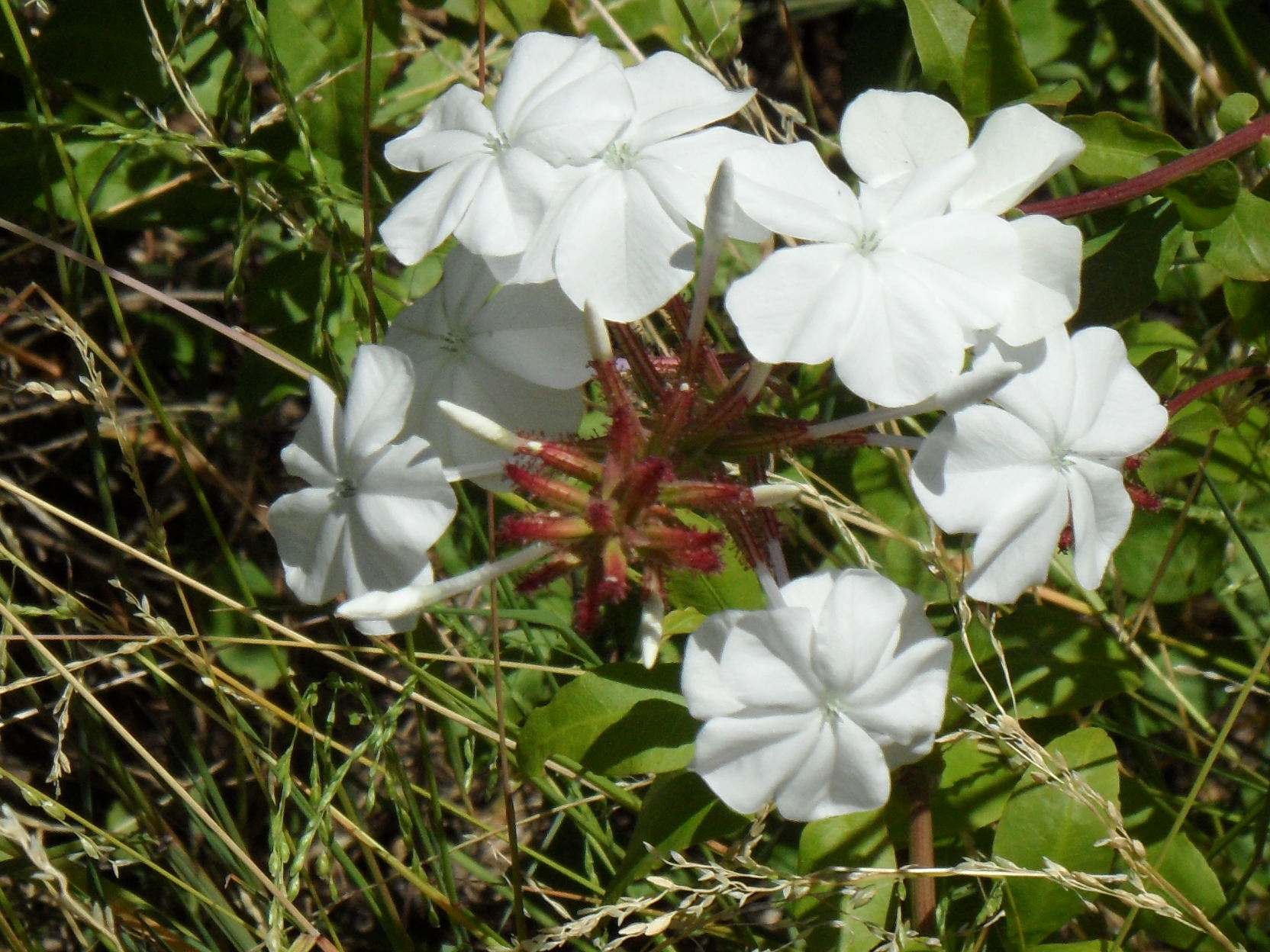
Latin plumbum—lead, so-called by the Roman writer Pliny who considered the European species a cure for lead poisoning.
Scrambling shrubs or perennial herbs. Leaves alternate, simple, entire, 'eared' at the base or surrounding the stem. Flowers in terminal few to many-flowered clusters, sometimes spike-like. Individual flowers with 3 bracts shorter than the sepals. Sepals forming a 5-ribbed tube covered with conspicuous sticky glandular hairs. Petals forming a slender tube with 5 spreading lobes. Stamens 5, free. Style with 5 short branches. Fruit a 1-seeded capsule splitting into 5 segments.
Medicinal.
Cuttings, division, seed.
Sepals with conspicuous glandular sticky hairs.
c. 25 species subtropical and tropical (1 Australian).
Source: (1997). Plumbaginaceae. In: . Horticultural Flora of South-eastern Australia. Volume 2. Flowering plants. Dicotyledons. Part 1. The identification of garden and cultivated plants. University of New South Wales Press.
